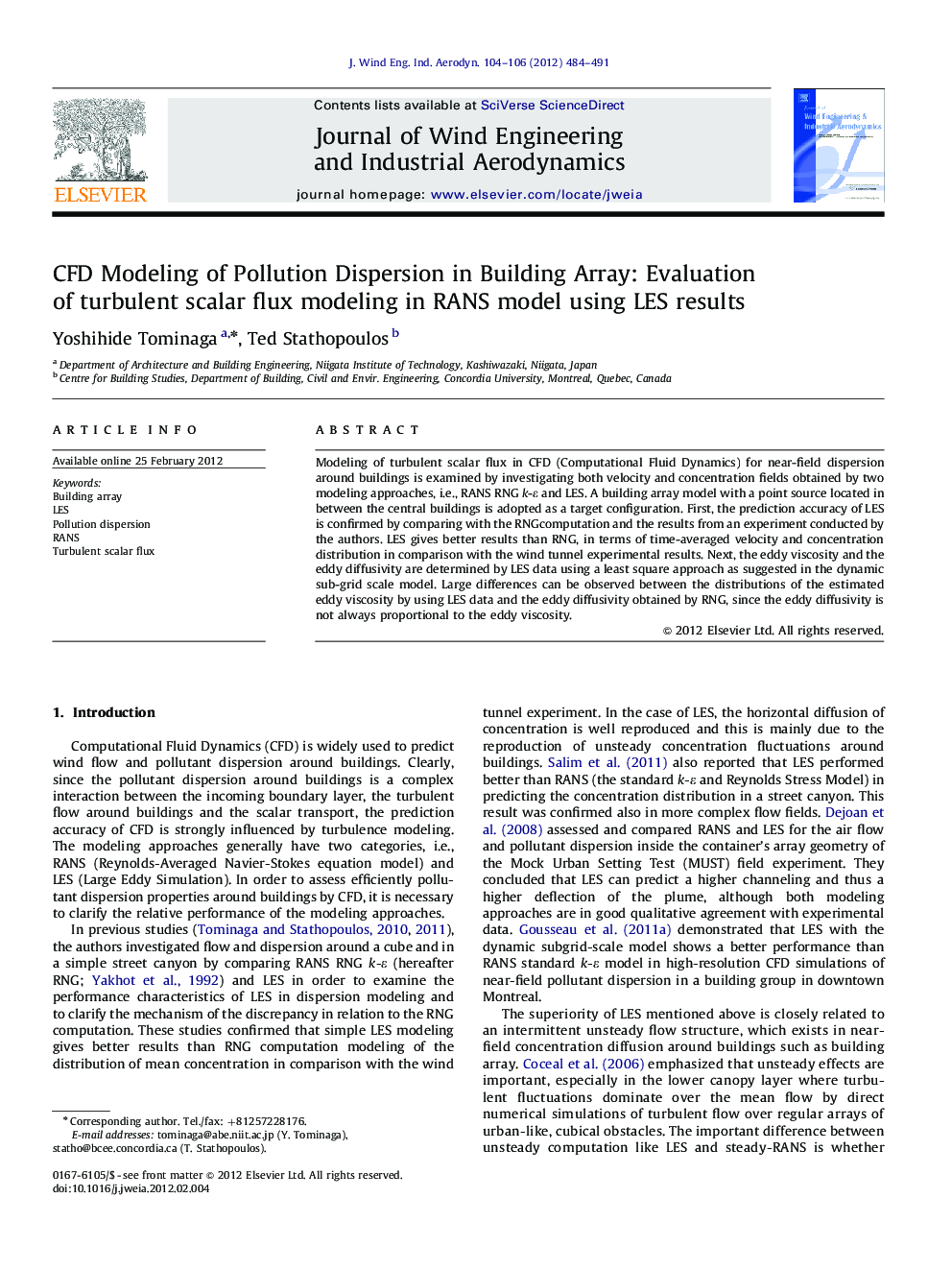| Article ID | Journal | Published Year | Pages | File Type |
|---|---|---|---|---|
| 293671 | Journal of Wind Engineering and Industrial Aerodynamics | 2012 | 8 Pages |
Modeling of turbulent scalar flux in CFD (Computational Fluid Dynamics) for near-field dispersion around buildings is examined by investigating both velocity and concentration fields obtained by two modeling approaches, i.e., RANS RNG k-ε and LES. A building array model with a point source located in between the central buildings is adopted as a target configuration. First, the prediction accuracy of LES is confirmed by comparing with the RNGcomputation and the results from an experiment conducted by the authors. LES gives better results than RNG, in terms of time-averaged velocity and concentration distribution in comparison with the wind tunnel experimental results. Next, the eddy viscosity and the eddy diffusivity are determined by LES data using a least square approach as suggested in the dynamic sub-grid scale model. Large differences can be observed between the distributions of the estimated eddy viscosity by using LES data and the eddy diffusivity obtained by RNG, since the eddy diffusivity is not always proportional to the eddy viscosity.
► CFD Modeling of turbulent scalar flux for dispersion around buildings is examined. ► Prediction accuracy of LES is confirmed by comparing with RANS and experiment. ► Eddy viscosity, eddy diffusivity and Sct are estimated by LES database.
